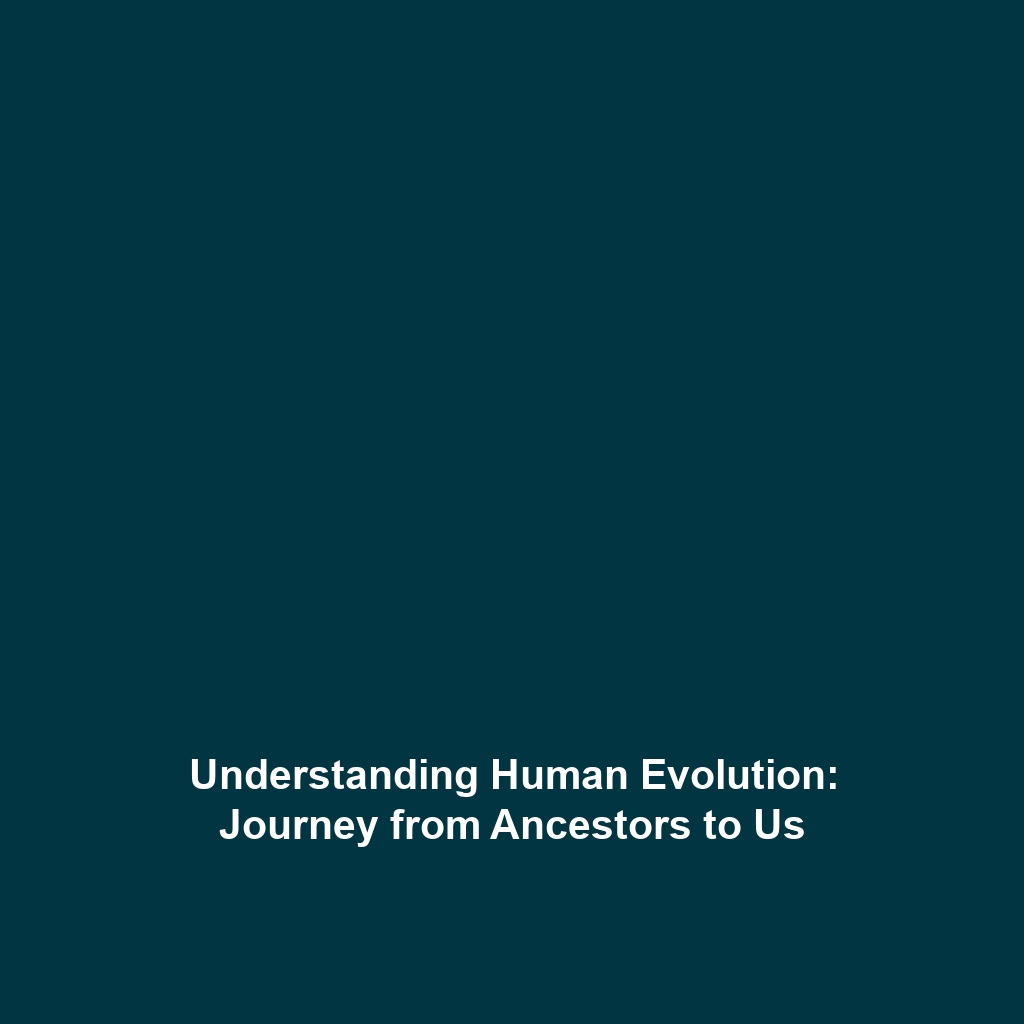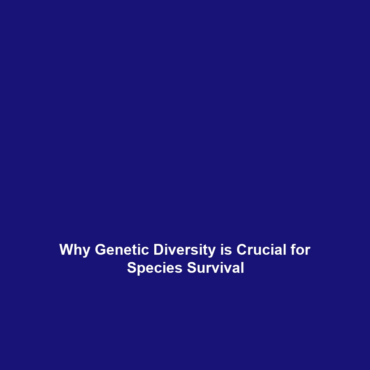What is Human Evolution?
Human evolution is the scientific study of the origins and development of human beings through various biological, anthropological, and archaeological perspectives. Understanding human evolution is crucial as it enhances our knowledge of how we evolved and adapted over millions of years. This fascinating field of study not only uncovers the journey of our species but also provides insight into the biological traits that define modern humans. This article delves into key concepts, applications, challenges, and future research in human evolution, presenting a comprehensive view of what human evolution means in today’s context.
Key Concepts of Human Evolution
Several fundamental concepts anchor the study of human evolution. These include:
-
Natural Selection
Natural selection is the process through which evolutionary changes occur as certain traits become more prevalent within populations due to their beneficial nature for survival and reproduction.
-
Common Ancestry
Common ancestry refers to the idea that all organisms share a common evolutionary background, with species diverging from earlier ancestors over vast periods.
-
Genetic Variation
Genetic variation is pivotal in human evolution as it introduces traits that can be selected for or against in varying environments, affecting an organism’s adaptability.
-
Fossil Record
The fossil record provides a wealth of information about our ancestors and demonstrates the gradual changes in physical characteristics that underscore the process of evolution.
Applications and Real-World Uses of Human Evolution
Understanding human evolution has numerous applications in various fields. Some significant uses include:
- Medical Research: Insights from human evolution can inform medical practices, especially in understanding diseases and genetic disorders.
- Ancestry Studies: Analyzing genetic material can reveal ancestral backgrounds and contribute to the fields of anthropology and genealogy.
- Educational Opportunities: The study of human evolution enhances educational content in biology and anthropology curricula worldwide.
Current Challenges in Studying Human Evolution
Despite its advancements, the study of human evolution faces several challenges, including:
- Obtaining accurate and complete fossil records from various regions.
- Understanding the complexities of human migration patterns and their implications.
- Addressing gaps in genetic data and how they relate to evolutionary characteristics.
- Overcoming public misconceptions and controversies regarding evolution and human origins.
Future Research and Innovations in Human Evolution
The study of human evolution is poised for exciting breakthroughs and innovations. Notable future directions include:
- Genomic Technologies: Advancements in genomic sequencing will allow for deeper investigations into human ancestry and evolutionary traits.
- Integrative Research: Interdisciplinary approaches combining genetics, anthropology, and environmental science to provide a more holistic understanding of human descent.
- 3D Imaging of Fossils: Utilizing 3D imaging technology to analyze fossilized remains with unparalleled precision, potentially unveiling new insights into our evolution.
Conclusion
In conclusion, understanding what human evolution is and its implications fosters a broader engagement with our past, enlightening us about our present and future. The significance of human evolution extends beyond academic boundaries, impacting various fields such as medicine, anthropology, and education. To delve deeper into other related topics, consider exploring our articles on human anatomy and genetic research.




